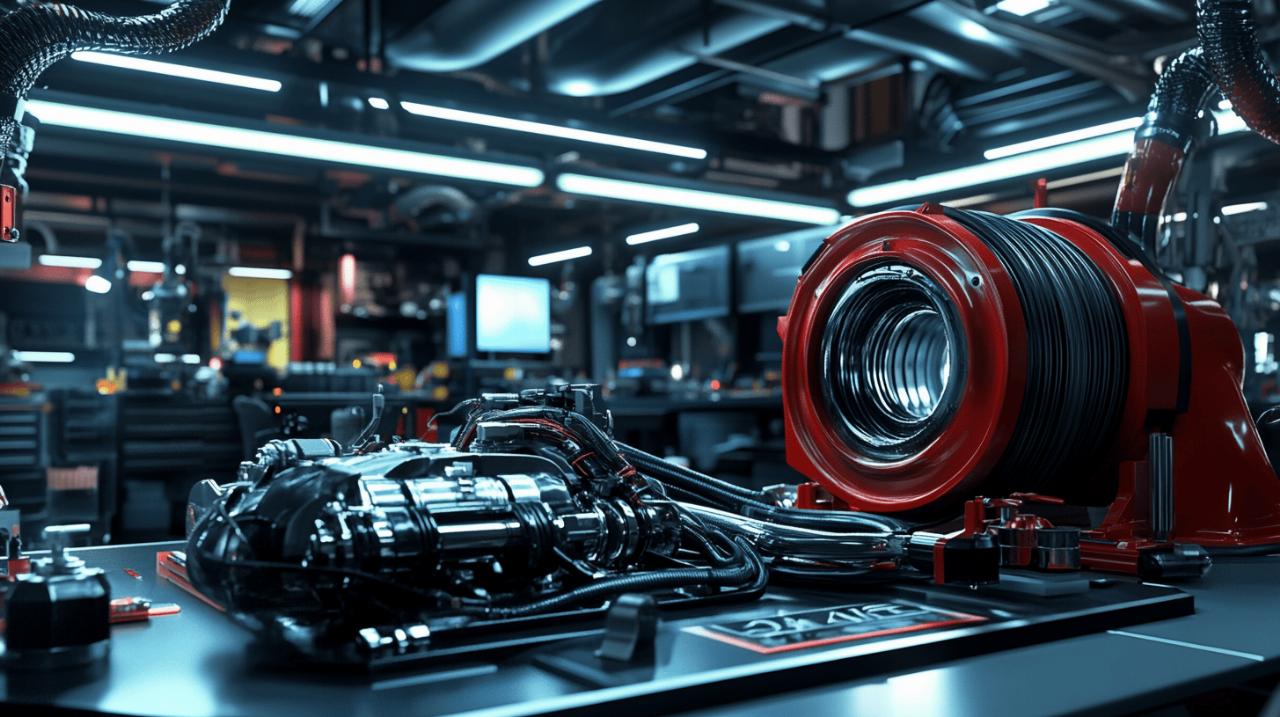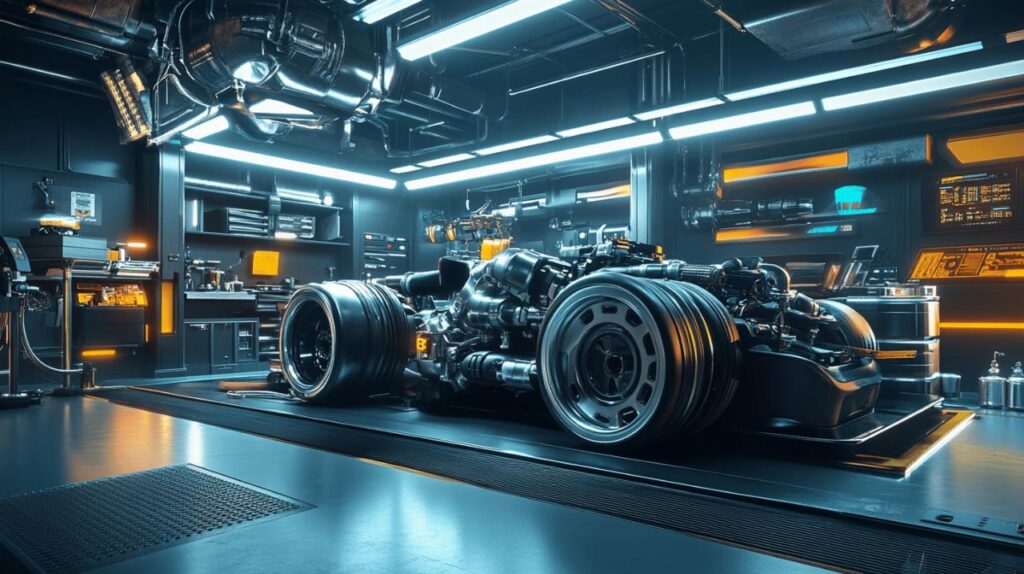When it comes to maintaining your vehicle's performance, few components are as crucial as the turbocharger. This precision-engineered part significantly boosts engine power, but without proper maintenance, it can develop issues like whistling noises that indicate potential problems. Auto Service Gall specialists recommend implementing a proactive maintenance schedule to avoid costly repairs and ensure optimal turbocharger performance. Let's explore essential maintenance practices to keep your turbo running smoothly and quietly.
Regular Inspection of Hoses and Connections
Turbocharger systems rely on a network of hoses and connections to maintain proper boost pressure. Any compromise in these connections can lead to air leaks, causing that characteristic whistling noise that indicates trouble. A thorough visual inspection of all hoses, clamps, and gaskets should be conducted every few months, particularly if you drive frequently or in demanding conditions.
Spotting loose connections before they cause problems
Early detection of potential issues can save you considerable time and money. Look for signs of wear such as cracks in rubber hoses, corrosion around metal connections, or oil residue that might indicate a leak. Turbocharger systems operate under high pressure and temperature, making even minor imperfections potential failure points. Pay special attention to areas where hoses connect to the intercooler, intake manifold, and the turbocharger itself.
Proper tightening techniques to prevent air leaks
When securing connections, avoid the common mistake of overtightening clamps and fittings. This can damage the components and actually create new leaks. Instead, follow manufacturer specifications for torque settings when tightening connections. Use appropriate tools like torque wrenches for precise tightening. For V-band clamps commonly found on turbo systems, ensure even tightening around the entire circumference to create a proper seal that prevents boost leaks and the resultant whistling noises.
Proper oil maintenance
The lifeblood of your turbocharger is its oil supply. Turbochargers spin at extremely high speeds, often exceeding 150,000 RPM, generating tremendous heat in the process. Without proper lubrication, bearings can fail rapidly, leading to catastrophic turbo failure. Implementing a rigorous oil maintenance schedule is perhaps the most important aspect of turbocharger care.
Selecting the Right Oil Type for Your Turbocharger
Not all engine oils are created equal when it comes to turbocharger protection. Modern turbocharged engines typically require fully synthetic oils with specific viscosity ratings and additives designed to withstand high temperatures. Check your vehicle manual for the recommended oil specification, paying attention to ACEA or API ratings. These specifications ensure the oil can withstand the thermal stress and maintain proper viscosity under the extreme conditions turbochargers create.
Optimal oil change intervals to maintain turbo health
While many modern vehicles suggest extended oil change intervals, turbocharged engines often benefit from more frequent oil changes. Consider changing oil every 5,000 to 7,500 miles rather than pushing to the maximum recommended interval. This practice helps remove contaminants that could damage the precision bearings in your turbocharger. Always replace the oil filter during each oil change, as a clogged filter can restrict oil flow to the turbo, leading to oil starvation and eventual failure.
Air filter care and replacement
The air filter serves as the first line of defence for your turbocharger, preventing harmful particles from entering the compressor wheel. Even small amounts of debris can cause imbalance and damage to the finely machined turbo components, resulting in whistling noises and reduced performance.
Signs your air filter needs changing
Visual inspection is the simplest way to determine if your air filter requires replacement. A clean filter appears white or close to its original colour, while a dirty filter will show significant discolouration, usually appearing brown or black. Beyond visual cues, performance indicators like reduced acceleration, lower fuel economy, or unusual engine sounds might suggest a clogged air filter is restricting airflow to the turbocharger. Most manufacturers recommend air filter replacement every 15,000 to 30,000 miles, but dusty environments may necessitate more frequent changes.
How a clean air filter improves turbocharger performance
A clean air filter allows the turbocharger to draw in the optimal amount of air without restriction, maintaining proper boost pressure and engine efficiency. This unrestricted airflow reduces the work the turbo must perform to achieve target boost levels, lowering operating temperatures and extending component life. Additionally, clean air entering the system minimises the risk of contaminants causing imbalance or erosion of the compressor wheel blades, which are common sources of whistling noises in turbocharger systems.
Examining turbine and compressor wheels
The heart of any turbocharger system lies in its turbine and compressor wheels. These precision components spin at incredible speeds, and any damage or imbalance can quickly lead to noticeable whistling noises and performance issues. Regular inspection can help identify problems before they escalate into major failures.
Recognising damage to turbo blades
Inspecting turbo blades requires careful observation. Look for signs of impact damage, such as nicks or bends in the blade edges, which commonly occur when foreign objects enter the turbo. Erosion from contaminants may appear as roughened surfaces or thinning at the blade edges. Another telltale sign of trouble is shaft play or wobble, which you can check by gently trying to move the shaft laterally. Any movement exceeding manufacturer specifications indicates bearing wear that could lead to blade contact with the housing, causing whistling noises.
Clearing debris to prevent imbalance issues
If you discover light carbon buildup or debris on the compressor or turbine wheels, careful cleaning may be possible without disassembly. For the compressor side, specialised turbo cleaning products can be used with caution, following manufacturer guidelines. More significant buildup or damage generally requires professional attention from specialists like Essex Turbos, who offer turbo refurbishment services. Remember that even minor imbalances in these high-speed components can generate whistling noises and accelerate wear throughout the system.
Monitoring boost pressure
Maintaining appropriate boost pressure is essential for turbocharger health and engine performance. Modern vehicles use complex control systems to regulate boost pressure, but various issues can disrupt these systems, leading to abnormal pressure conditions that stress components and create distinctive whistling noises.
Normal boost ranges for different turbo systems
Boost pressure specifications vary widely depending on your vehicle make, model, and engine type. Most passenger cars with factory turbocharged engines operate in the range of 8 to 15 PSI (0.5 to 1 bar) of boost pressure, while performance models might push higher. Diesel engines typically run higher boost pressures, often between 15 and 25 PSI (1 to 1.7 bar). Consulting your vehicle manual or a reputable source like Auto Service Gall for the correct specifications is crucial, as exceeding design limits can lead to premature turbocharger failure.
Troubleshooting when boost levels fall outside specifications
When boost pressure readings deviate from normal ranges, systematic troubleshooting can identify the cause. Low boost pressure often indicates leaks in the system, wastegate issues, or turbocharger damage. Conversely, excessive boost might stem from wastegate actuator problems, boost controller malfunctions, or electronic control issues. Modern vehicles typically store diagnostic trouble codes when boost pressure problems occur, making a diagnostic scan tool invaluable for troubleshooting. Professional automotive services can perform detailed pressure testing to pinpoint leaks and verify proper system operation, helping eliminate whistling noises and ensure optimal turbocharger performance.

